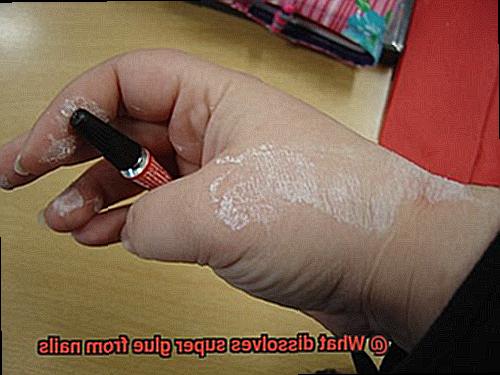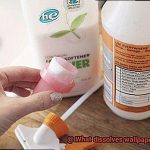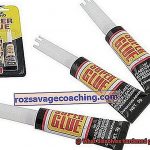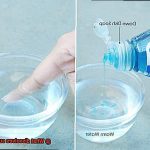Imagine this: you’ve just finished creating a masterpiece on your nails, only to have a super glue disaster that leaves your fingertips stuck together. Ugh, talk about frustrating. But fear not, my friend, because we’ve got your back.
In this blog post, we’re diving deep into the world of quick and painless solutions for dissolving super glue from your nails. Whether you had a tiny mishap or were just experimenting with some DIY magic, we understand the panic that sets in. So grab a seat and get ready to discover some safe and effective remedies.
Say goodbye to those unwanted nail bonds and hello to beautifully groomed digits once again.
Here, we’ll explore all sorts of methods and techniques to tackle this sticky situation. From everyday household items to specially designed removers, we’ll uncover what works best, leaving you armed with everything you need to save the day. Don’t worry – we’ll guide you through each step, making sure you stay safe while preserving your precious nails.
No more crying fits or desperate attempts at prying off that stubborn glue. Whether you’re an avid DIY enthusiast or just someone who’s had their fair share of clumsy moments, this guide is perfect for anyone seeking nail liberation. Get ready to take control of your digits with these hassle-free hacks. So sit back, relax, and let us show you how to dissolve super glue from your nails like a pro.
Stay tuned for our in-depth exploration of the most effective methods for removing super glue from your precious nails. Get ready to say goodbye to that unwelcome bond and restore the natural beauty of your nails. We’re excited to go on this journey with you as we reveal the secrets to achieving a glue-free nail nirvana.
What is Super Glue?
Contents
- 1 What is Super Glue?
- 2 What are the Dangers of Super Glue on Nails?
- 3 How to Remove Super Glue from Nails?
- 4 Acetone: A Powerful Solvent for Removing Super Glue
- 5 Nail Polish Remover: Another Alternative for Dissolving Super Glue
- 6 Natural Alternatives for Removing Super Glue from Nails
- 7 Lemon Juice or Vinegar: Breaking Down the Adhesive Bonds of Super Glue
- 8 Warm Soapy Water: An Effective Method for Dissolving Super Glue
- 9 Conclusion
Super Glue, also known as cyanoacrylate adhesive, is a revolutionary product that has transformed the world of bonding. From repairing broken objects to creating intricate crafts, this fast-acting adhesive has become an essential tool in many households and industries. But what exactly is Super Glue, and how does it work? In this article, we will explore the components, uses, and precautions associated with this mighty adhesive.
The Components:
At the core of Super Glue lies its primary ingredient: cyanoacrylate. This liquid monomer undergoes a rapid polymerization process when exposed to moisture, resulting in a sturdy and unyielding bond.
When cyanoacrylate molecules encounter hydroxyl ions (OH-) found in water or moisture on surfaces being bonded, they swiftly form long chains of polymerized cyanoacrylate. This reaction creates a solid bond that sets quickly.
The Uses:
Super Glue’s versatility is one of its most remarkable features. It can effectively bond an extensive range of materials including plastics, metals, ceramics, rubber, and even human skin.
This makes it an ideal choice for countless applications such as household repairs, crafting projects, and even medical procedures. Whether you’re fixing a shattered vase or fashioning intricate jewelry pieces, Super Glue offers a reliable and durable solution.
Risks and Precautions:
While Super Glue is a powerful adhesive, it does come with some risks. Its quick-setting properties mean that once the glued surfaces make contact, they bond rapidly. This can pose challenges when it comes to controlling or repositioning the materials if necessary. Therefore, it is crucial to exercise caution and precision during application to avoid unintended bonding or messy mishaps.
Additionally, Super Glue may not adhere well to certain materials with low surface energy like polyethylene, polypropylene, or Teflon. Furthermore, over time, Super Glue can become brittle, limiting its suitability for applications requiring flexibility or resistance to extreme temperatures.
What are the Dangers of Super Glue on Nails?
Today, we’re diving into the sticky truth behind this powerful adhesive. From skin irritation to accidental finger bonding (ouch.), we’ll uncover the risks you need to know before reaching for that tube of super glue.
Skin Irritation and Allergic Reactions:
Beware, sensitive souls. Super glue contains chemicals that can cause skin irritation and allergic reactions, leaving you with redness, itching, swelling, or even blisters. Keep those delicate digits in mind when applying super glue.
Accidental Finger Bonding:
Picture this: you’re carefully fixing a broken nail when suddenly – whoops. – your fingers are stuck together like a sticky comedy show. Super glue dries quickly and forms a strong bond, making it challenging to separate glued fingers without causing injury. Exercise caution and keep a solvent nearby for any mishaps.
Nail Damage:
Weak nails are no joke. Using super glue can weaken your nails over time, making them brittle and prone to breakage. Say goodbye to your manicure dreams if your nails can’t handle the pressure.
Chemical Composition Concerns:
Super glue isn’t specifically formulated for use on nails, so pay attention to the ingredients list. Some brands may contain additives or solvents that could be potentially harmful when absorbed through the nail plate. Stick to nail-specific adhesives whenever possible.
Improper Application and Removal Techniques:
Applying super glue too close to the cuticles or forcefully removing it can cause further damage. Seepage into the skin can lead to irritation or chemical burns, while peeling it off weakens the top layers of the nail, leaving them vulnerable to breakage. Handle super glue with care, and protect your nails.
Harsh Solvents:
Think twice before using household solvents or acetone to remove super glue. These substances can strip away the natural oils from your nails, leaving them dry, brittle, and dehydrated. Choose gentler removal methods or consult a professional if you’re unsure.
How to Remove Super Glue from Nails?
Accidentally getting super glue on your nails can be frustrating, but fear not. In this article, we will explore some tried and tested methods for removing super glue from your nails. From using acetone to natural remedies like olive oil or coconut oil, we’ve got you covered.
Acetone: The Magic Solution
Acetone, found in many nail polish removers, is a powerful solvent that breaks down super glue. Soak your nails in a bowl filled with acetone for 10-15 minutes or apply a cotton ball soaked in acetone directly on the glued area. Gently scrape off the softened glue using a cuticle pusher or an orange stick.
Warm Soapy Water: Simple and Effective
Soak your nails in warm soapy water for 5-10 minutes to soften the glue. Apply soap to the affected area and gently rub it in using a soft toothbrush or nail brush. Rinse thoroughly and repeat if necessary.
Olive Oil or Coconut Oil: Nature’s Helpers
Apply a generous amount of olive oil or coconut oil to the glued area and let it sit for a few minutes. Gently scrape off the glue using a cuticle pusher or an orange stick. These oils not only dissolve the glue but also moisturize your nails.
Rubbing Alcohol: A Strong Ally
Soak a cotton ball or pad in rubbing alcohol and place it on top of the glued area. Wrap it with aluminum foil and let it sit for 10-15 minutes. Gently scrape off the softened glue using a cuticle pusher or an orange stick.
Patience Is Key
Removing super glue from nails may take time and effort, especially if the glue has hardened or if there are multiple layers. Be patient and avoid forcefully pulling or tearing the glue off, as this can damage your nails.
Acetone: A Powerful Solvent for Removing Super Glue
Accidentally gluing your nails together can be a frustrating experience, but fear not. With the right knowledge and tools, you can easily dissolve super glue and restore your nails to their natural state. In this blog post, we will explore the power of acetone as a solvent for removing super glue from nails.
The Power of Acetone:
Acetone, a widely used solvent known for its ability to break down chemical bonds, is the go-to solution for removing super glue from various surfaces, including nails. This clear, colorless liquid with its distinctive odor is commonly found in nail polish removers and industrial solvents. When it comes to tackling stubborn super glue on your nails, acetone works its magic by breaking down the adhesive bonds that hold the glue together.
The Process:
To effectively remove super glue from your nails using acetone, follow these simple steps:
- Protect the surrounding skin: Before applying acetone, take a moment to protect the skin around your nails. Applying a thin layer of petroleum jelly or cuticle oil will act as a barrier.
- Soak a saturated cotton ball or pad: Ensure that the cotton ball or pad is saturated with acetone but not dripping.
- Apply acetone to the affected area: Gently press the soaked cotton ball or pad onto the glued area of your nails, ensuring complete coverage.
- Allow time for penetration: Give the acetone-soaked cotton ball or pad a few minutes to penetrate the super glue and weaken its bond.
- Gentle scraping: After soaking, use a wooden stick or an orange stick to gently scrape off the softened super glue. Be cautious not to scrape too hard and damage your natural nails.
- Repeat if necessary: Depending on the thickness of the super glue layer, you may need to repeat the process several times to completely remove it.
- Moisturize and nourish: After successfully removing the super glue, it’s crucial to replenish moisture and nourishment to your nails. Acetone can dry out the nail bed and cuticles, so be sure to apply a rich moisturizer or cuticle oil to restore hydration.
Precautions and Alternatives:
While acetone is generally safe to use, it’s important to note that some individuals may experience skin irritation or allergic reactions. To ensure your safety, conduct a patch test before applying acetone to the entire nail area. If acetone is not readily available, alternatives such as nail polish remover containing acetone or rubbing alcohol can be used, although they may be less effective than pure acetone.
Nail Polish Remover: Another Alternative for Dissolving Super Glue
Your bathroom cabinet holds a secret weapon – nail polish remover. In this article, we delve into the power of nail polish remover, armed with its potent solvent acetone, to dissolve even the most stubborn super glue. Get ready to discover the step-by-step process and some handy tips for effectively using nail polish remover to save your nails from their sticky situation.
Step 1: Gather Your Tools
Before you embark on your mission, assemble your weapons. Grab a cotton ball or pad along with your trusty bottle of nail polish remover from your beauty stash. If you have sensitive or damaged nails, opt for a non-acetone nail polish remover as a gentler alternative.
Step 2: Soak and Apply
Immerse the cotton ball or pad in nail polish remover until it is saturated but not dripping. Gently rub it over the area where the super glue has adhered to your nails. The mighty acetone in the nail polish remover will penetrate the layers of the glue, weakening its adhesive properties.
Step 3: Patience and Persistence
Prepare yourself for a battle of endurance. The nail polish remover may take some time to completely dissolve the super glue. Be prepared to repeat the process and apply gentle pressure while rubbing to expedite the dissolution process.
Step 4: Gentle Scrape
As the super glue begins to loosen its grip, employ a gentle scraping technique using a soft tool such as a cuticle pusher or an orange stick. Exercise caution to avoid damaging your nails during this delicate operation.
Step 5: Nourish and Moisturize
You have successfully conquered the super glue menace. Now, it’s time to lavish some tender loving care on your nails. Pamper them with a nourishing cuticle oil or hand cream to prevent dryness and promote healthy nail growth.
Alternative Solutions:
If nail polish remover is not readily available or you prefer to avoid acetone-based products, fret not. There are other solutions at your disposal. Although warm soapy water, olive oil, vinegar, or lemon juice may not match the effectiveness of acetone, they can still weaken the bonds of super glue.
Conclusion:
Nail polish remover, armed with its potent acetone content, emerges as a superhero in the battle against super glue on your nails. Remember to exercise patience, persistence, and gentleness throughout the process.
If acetone is not at hand, rest assured that alternative solutions exist. So, when faced with the dreaded super glue on your nails, reach for that trusty bottle of nail polish remover and save the day.
Natural Alternatives for Removing Super Glue from Nails
Super glue can be a stubborn adhesive to remove from nails, but fear not. I have researched and compiled a list of natural alternatives that are effective and gentle on your nails. No more harsh acetone or worrying about damaging your nails. Let’s dive into these natural remedies and get rid of that super glue.
- Olive oil: This kitchen staple is not only great for cooking but also for removing super glue from your nails. Soak your nails in warm olive oil for 15-20 minutes. The oil will help break down the adhesive properties of the super glue, making it easier to remove. Gently peel off the glue using a wooden cuticle stick or a soft cloth.
- Lemon juice: Lemon juice contains citric acid, which can help dissolve super glue. Squeeze fresh lemon juice onto a cotton ball or pad and apply it to the glued area. Let it sit for a few minutes before gently rubbing or peeling off the glue. Remember to moisturize your nails afterward, as lemon juice can be drying.
- Warm soapy water: If you don’t have olive oil or lemon juice on hand, try soaking your nails in warm soapy water. Fill a bowl with warm water and add a few drops of gentle dish soap or hand soap. Soak your nails for 10-15 minutes, then gently peel off the glue using a wooden cuticle stick or a soft cloth.
- Baking soda paste: Create a paste by mixing equal parts baking soda and water. Apply the paste to the glued area and let it sit for a few minutes. Gently scrub the paste using a soft toothbrush or cloth, then rinse your nails with warm water.
Remember, patience is key when removing super glue from your nails. Be gentle and take your time to avoid damaging your nails. If the glue persists or if you experience any discomfort, it’s best to seek professional help or consult a dermatologist.
Lemon Juice or Vinegar: Breaking Down the Adhesive Bonds of Super Glue
Mother Nature has provided us with two acidic warriors to battle these adhesive bonds. In this article, we will delve into the effectiveness of lemon juice and vinegar in removing super glue, exploring their properties and how they work their magic.
The Power of Acidity:
Lemon juice and vinegar, both acidic substances, possess the mighty ability to weaken the tenacious chemical bonds of super glue. With citric acid in lemon juice and acetic acid in vinegar, these sour champions deliver a one-two punch that makes glue removal a breeze.
Application Method:
To free your nails from the clutches of super glue, simply saturate a cotton ball or cloth with either lemon juice or vinegar. Gently press it onto the affected area, allowing the acid to seep into the adhesive’s stronghold.
After a few minutes of tension-building, rub your nails with the soaked cotton ball or cloth, applying just enough pressure to coax the softened glue away. Repeat this process whenever necessary until every last trace of super glue is vanquished.
Effectiveness Considerations:
Not all super glues are created equal, as some are fortified against solvents like acids. If lemon juice or vinegar alone fails to conquer the stubborn adhesive, fear not. Combine these acidic warriors with other household heroes like baking soda or hydrogen peroxide to unleash an even mightier assault on the adhesive’s fortifications.
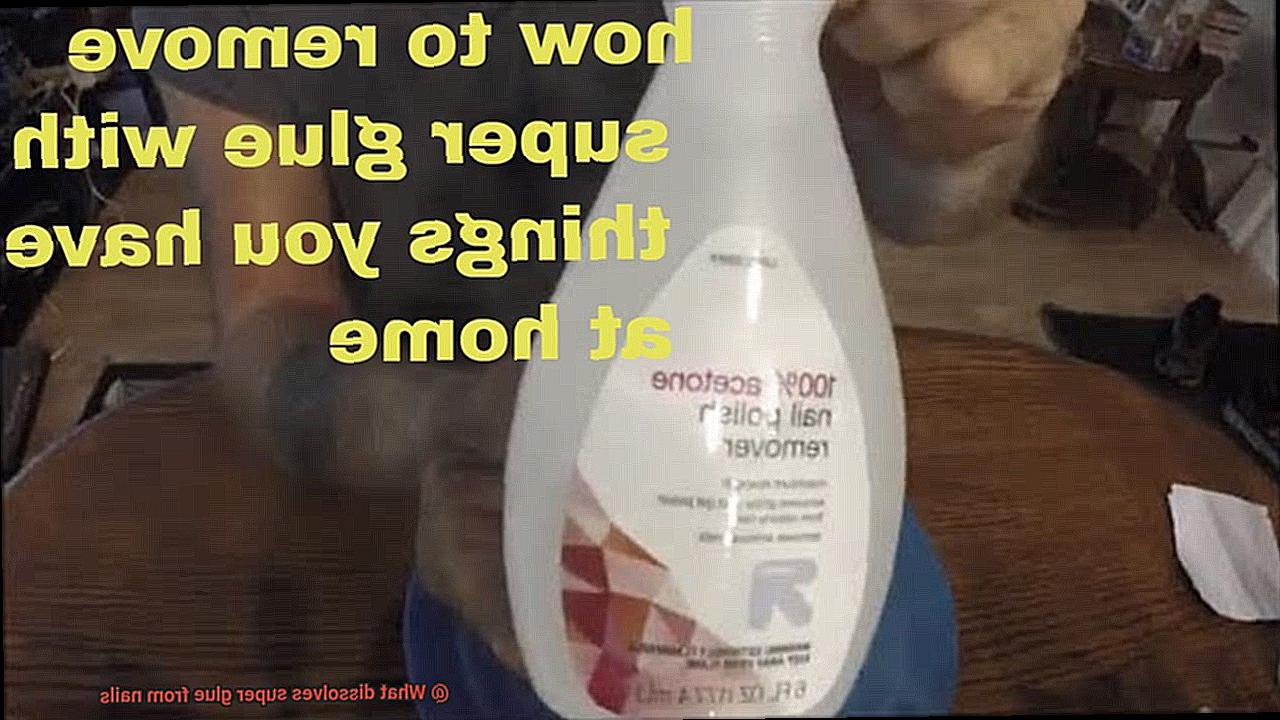
Precautions:
While lemon juice and vinegar are generally skin-friendly, they may cause dryness or irritation. After using these acidic substances, ensure you cleanse your hands thoroughly and lavish your nails with moisture to soothe them.
Warm Soapy Water: An Effective Method for Dissolving Super Glue
We’ve all experienced the frustration of accidentally gluing our fingers together or getting super glue on our nails. But fear not, because I have a simple yet effective solution for you – warm soapy water. This basic household remedy has proven to be an excellent method for dissolving super glue.
So how does warm soapy water work its magic? Let’s dive into the science behind it. Firstly, the warm temperature of the water plays a crucial role in loosening the bond between the super glue and your nails. Just like hot water helps to loosen up stiff muscles, it does the same with the adhesive properties of super glue. However, it’s important to use comfortably warm water, not scalding hot, to avoid any discomfort or burns.
But that’s not all. The soap in the warm water acts as a surfactant, breaking down the adhesive properties of the super glue and allowing it to dissolve in the water. It’s like having a secret weapon against the stubbornness of super glue.
Now, let’s walk through how you can use warm soapy water to remove super glue from your nails:
- Fill a bowl or basin with warm water. Remember, not too hot.
- Add a few drops of mild dish soap or hand soap to the warm water and mix it gently to create a soapy solution. You don’t need too much soap, just enough to make it sudsy.
- Now comes the relaxing part – soak your nails in the warm soapy water for about 10-15 minutes. This gives enough time for the glue to soften and dissolve.
- After soaking, gently try to peel off the softened super glue using your fingers or a soft cloth. Be careful not to apply too much force as it may damage your nails.
- If the super glue doesn’t come off easily, repeat the soaking process for another 5-10 minutes and try again. Persistence is key.
- Once you have successfully removed the super glue, rinse your nails with clean water and pat them dry with a soft towel.
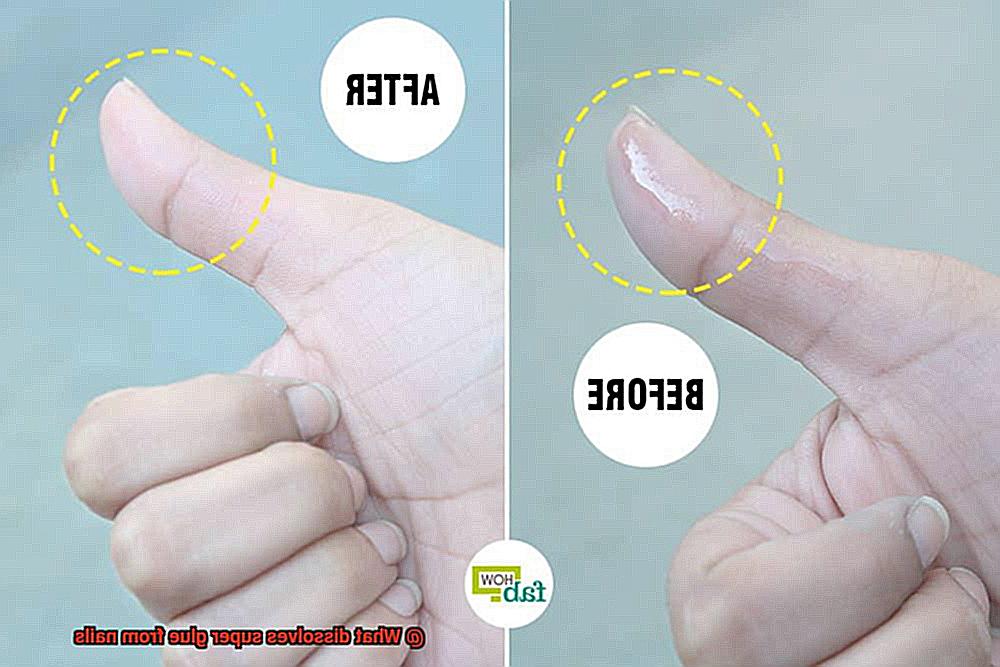
It’s worth noting that soaking your nails in warm soapy water can cause dryness. Therefore, after removing the super glue, it’s important to moisturize your nails and cuticles. Apply a nourishing nail oil or cream to keep them hydrated and healthy.
Warm soapy water is generally safe to use on most types of nails, including natural nails, acrylic nails, and gel nails. However, if you have sensitive skin or any skin conditions, it’s always a good idea to consult a dermatologist before trying this method.
uJohVi5GVvo” >
Also Read: How do you remove super glue residue from rubber?
Conclusion
When it comes to dealing with the stubborn grip of super glue on your nails, fear not, for there are effective solutions at hand.
With a little know-how and the right ingredients, you can bid farewell to that unwanted adhesive residue. From household remedies to store-bought products, the options are aplenty.
Soak your nails in warm soapy water to loosen the bond or try using acetone-based nail polish remover for a more targeted approach. For those seeking natural alternatives, lemon juice or vinegar might just do the trick.
Remember, patience is key as you gently work away the glue with a soft cloth or nail file.

